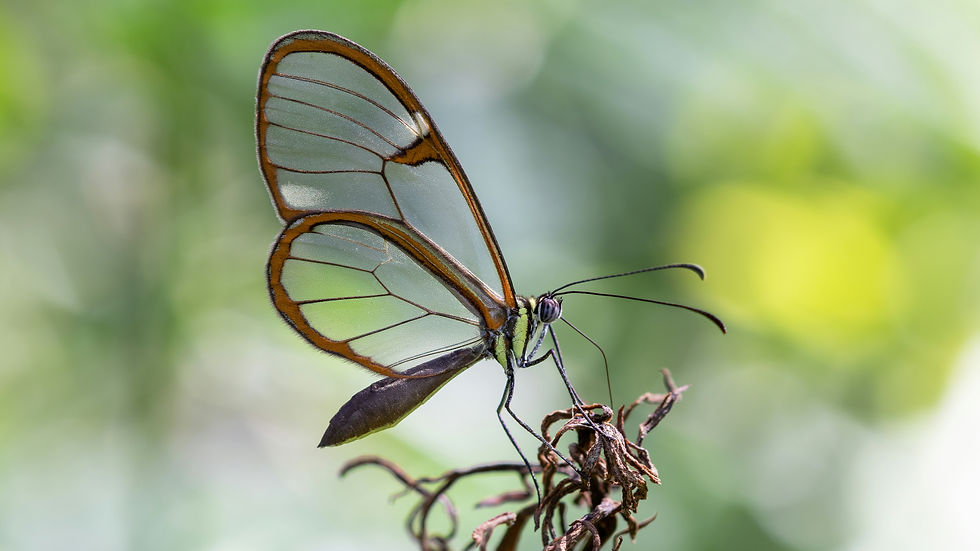Spanning The Globe October 2025
- marketingc8
- Oct 15
- 3 min read
It’s time to go spanning the globe for anatomy news and notes!
Baby Talk
We loved this article in the New York Times about how baby humans develop language. A study—actually, it was many studies—looked at how humans interact with their offspring versus how other mammals do it.
Yes, baby talk. What parent hasn’t employed “baby talk” in communicating with their children who are not yet speaking? Known as “infant-directed speech” by scientists, baby talk “often features repeated words, an exaggerated stress on syllables and a high, singsong tone.”
“This distinctive pattern is very effective at grabbing the attention of young children—even when they’re too young to understand the meaning of the words that adults are saying. It’s possible that children pay attention to infant-directed speech because it helps them learn some of the basic features of language.”
Well, a whole team of scientists compared this human talent to bonobos in the Congo, chimpanzees in Uganda, gorillas in Central African Republic and more.
In a nutshell? Speaking baby talk is a natural thing. It’s just something we do. And language helped as evolve—and continue to add to our talent at communcition in all forms.
The Coelacanth
A coelacanth is a type of lobe-finned fish. They live in caves 900 meters below the surface of the ocean. They are characterized by their fleshy, lobed fins and were previously known only from fossils dating back to the Cretaceous period. Today, they are considered “living fossils” which sounds to us as clear as “jumbo shrimp.”
Anyway, they are key to our understanding into the evolution of four-limbed vertebrates, a.k.a. tetrapods. That’s in part because unlike most fish the lobed fins of a coelacanth area supported bones. They also have a hinged skull and give birth to live young. They also have a rostral organ—a gel-filled cavity in the snout that functions as a low-resolution electro-detector to locate prey.
Well, the coelacanth hasn’t changed must over the past 65 millions years and it is one of the most studied fish in history. And now a new study published in the journal Science Advances by researchers from the University of São Paulo (USP) in Brazil and the Smithsonian Institution in the United States shows that the ongoing work continues to adjust our view of vertebrate evolution.
According to an article in Science Daily, researchers analyzed the skull musculature of coelacanths and concluded that many structures “had been incorrectly described.” Key muscles were actually ligaments. “This means foundational assumptions about how vertebrates, including humans, evolved to eat and breathe may need to be rewritten. The discovery corrects decades of anatomical errors, reshapes the story of skull evolution, and brings unexpected insights into our own distant origins.”

Butterflies!
In fact, there’s really no end to evolutionary reconsiderations. How many times do we check our alerts to find some headline proclaiming that previous theories are being readjusted? Once a week or more?
Now another “large international team,” according to this article in Phys.org, is “rewriting” the evolutionary tree of glasswing butterflies. During the work, six new species were also identified.
In order to “genetically untangle these butterflies,” according to the article, an international team of scientists “sequenced the genomes of almost all species of two particularly fast radiations of glasswing butterflies to remap their evolutionary trees.”
The work found that in glasswing butterflies, even the most closely related species produce different pheromones, indicating that they can smell others of the same species. Given that all of these butterflies look the same, this allows the butterflies to find a compatible mate. (It’s the glasswing butterflies’ coloring that implies to birds that they are toxic and, therefore, not a good source of food.)
Butterflies are considered as an “indicator species,” meaning they are used to track and monitor the levels of biodiversity in an area. There are—get this—over 400 different species of glasswing butterflies.
Scientists hope that the new “genetically informed” evolutionary tree along with “multiple new reference genomes” that it will be possible to advance biodiversity and conservation research around the world.
Thanks to all the scientists who continue to move the needle on all those important areas of research!
.
.
.
.




Comments